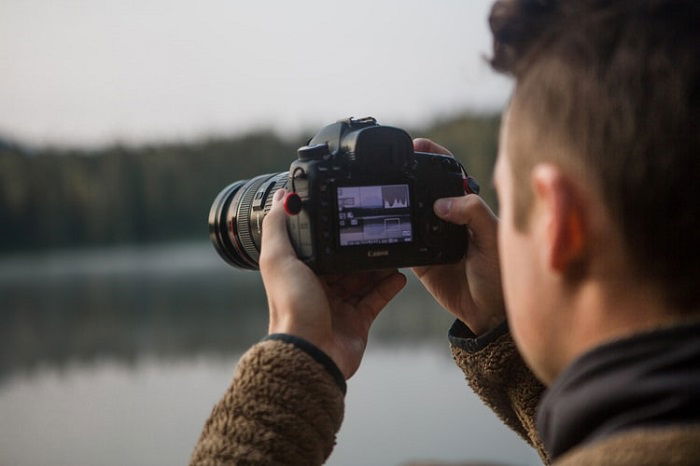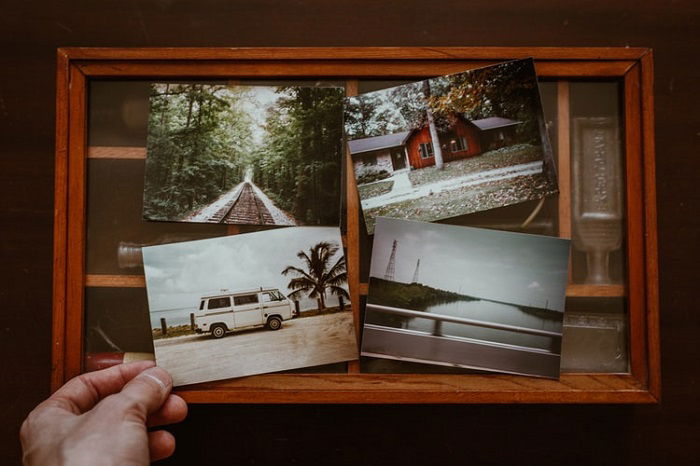Knowing the best way to store photos is important. Photos are more than just a bit of color on paper or information on a computer. They’re works of art and captured moments from our lives. So we want to ensure they’re safe and secure.
There’s nothing worse than losing your photos. It’s a heartbreaking experience. And for professionals, losing photos can be costly. It could cost you a job or damage your reputation. But even for amateurs, it can be equally upsetting.
That’s why storing your photos is so important. Even if you’re not a professional photographer, you should take a professional approach to photo storage. Thankfully, we have some solutions. We’ve created a list of the best ways to store digital photos.

Photographers have to make photo storage a top priority. Even beginners soon realize how important this is. Losing any photo can be heartbreaking, but losing professional pictures can cost you your livelihood.
There isn’t just one solution for secure photo storage. You need to use several methods to create a foolproof system that ensures you never lose important photos again.
We’ll take you through all the best ways to store photos right here. We have seven important tips and tools for better photo storage.
You might think you’re photo files are safe on your computer or laptop, but believe us—they’re not!
Computers and laptops are great tools and essential to modern photography. But they’re fragile. They can suffer physical damage from dropping it or spilling something on it. And theft is also a concern.
You can also encounter technical issues like viruses or hardware malfunctions. If a computer develops a software problem, sometimes the only solution is to wipe the whole thing. That means your photos, too!
That’s why an external hard drive is just as important as your actual device. A hard drive can store thousands of image files and hours of video footage.
You plug it into your device using a USB cable and transfer the photos. Thus, your photos are safely stored even if the worst happens to your computer.
As well as being one of the best ways to store photos, they are also great for archiving invoices and other documents. Check out our full list of the best external hard drives for photographers.

If you want to avoid filling your house with electronic devices, you can use online cloud services. A cloud storage system serves the same function as an external hard drive—only online. No USB cables are needed here! Plus, cloud storage services are simple and easy to use.
First, you copy the files from your device and move them to the cloud. Then, you can log in and access them from any device with an internet connection.
Several cloud storage services offer free storage. Dropbox is excellent, but the free storage capacity is limited to 2 GB. Google Drive is another great cloud storage service with 15 GB for free.
There are also specific cloud photo services, such as Google Photos. It makes storing and organizing photos from all your mobile devices easy.
If you want more photo storage, you’ll need to pay. Cloud storage services such as pCloud and Sync have different plans you can purchase.
First, you need to find the right plan that suits your needs. Basic plans start with 200 GB, but some cloud services offer packages with unlimited storage.
Check our all the best cloud storage recommendations here.

Memory card capacity is growing all the time. Despite their small physical size, they can hold hundreds, if not thousands, of photos simultaneously. And now, many professional cameras have dual memory card slots.
These developments mean you can store lots of photos on your camera. But keeping the shots only on your memory card is bad practice.
If you lose track of how many photos you have on your card, you may fill it up at an inconvenient moment. And to capture new images, you might need to delete old ones.
The biggest problem is the memory card itself. They may have a big storage capacity, but they are small. And small means easy to lose. So it’s best to move the photos onto another device as soon as possible.
Modern digital cameras make this easy. Many allow you to transfer files from the camera to another device using Bluetooth or Wi-Fi.
Using your camera’s Wi-Fi connectivity can be slow, and it’s not the best way of moving large numbers of media files. It’s quicker and more efficient to connect your camera to a computer or use an SD card reader.
If you are unable to move photos from your SD cards to another device straight away, store the cards in a durable SD card case. They are small, fragile, and easy to lose, so you need a case that will keep them safe.
While SD cards are not a long-term storage solution, they are useful a useful way to store photos for short periods. It’s worth investing in a few memory cards and a reliable case.
See our full article on the best SD cards in this link.

USB flash drives are another useful tool for storing photos. They are small and convenient. And some have surprisingly large storage capacities.
Flash drives are one of the best ways to transfer photos from one device to another. The process is quick and painless, and you can transfer hundreds, perhaps even thousands, of photos all at once.
The convenient size makes them portable, even more so than external hard drives. Most flash drives will fit in the pocket of your jeans. That means you can carry many of them in your camera backpack.
However, flash drives are not a long-term storage solution. You can use several at one time, using specific ones for specific shoots or themes. But this can get messy. Their small size also makes flash drives easy to use.
We recommend photographers purchase several USB flash drives because they’re so useful. But they are not the best way to store photos long term. You should see them as one tool in your photo storage strategy.
See our selection of the best USB Flash Drives in this article. You can also get flash drives for smartphones.
Email is a great way of staying connected and sending information electronically. But you can also use it to store photos and files.
Create a draft email, attach the photos you want to store, and send the email. Only this time, you send the email to yourself. If you have two email accounts, you can send them from one to the other.
Once received, the attached photos are stored on your email server. You can download them from any device. And you can organize emails so they don’t get lost or deleted accidentally.
The problem with this system is that emails have very limited capacity. You can only attach a few photos to each email. If you want to store many photos this way, you’ll send yourself a lot of emails!
You can turn your photo folders into zip files to reduce their size. This allows you to send more information in each email. But it’s still very limited.

Put the matches down. We’re sure burning files to CDs is a hazy memory for you, too! But saving files on a CD or DVD is a great way to back up photos.
You can transfer the files from your computer to a CD. A single CD can store hundreds of photo files. It can be a bit time-consuming, but you can create a whole library of photos on a CD. It also frees up a lot of space on your hard drive.
This storage system is far from perfect. You need to store the CDs carefully so they don’t get damaged. And they also take up space in your home or office.
You also need to make sure you label everything correctly. All blank CDs look the same. So be sure to note which photos are on each CD.
And, of course, you need to buy the CDs. It’s an additional cost you have to consider. Plus, make sure your computer or laptop has a disk drive first!

Most photos taken on a digital camera or smartphone exist purely in the digital world. They are rarely printed into a physical photo.
But printing images is a great way to store photos. Not only will you have a copy of the picture you can display, but you’ll also have a copy in case the digital file is lost.
Your printed photos can be framed and displayed in your home. Or you can put it in a photo album. Either way, it will be safe and accessible.
You can do this at home if you have a good-quality printer. Or you can take files to a photography shop and print them onto photo paper.
But it’s not a solution for backing up your entire digital library. Whether printing at home or in a shop, it will get expensive. You should only print the photos that are extra special to you.

This isn’t a way to store digital photos. But photo recovery software can provide a lifeline when disaster strikes. It can recover files that might have been wiped or deleted accidentally. And that not only saves you blushes, but it can also save your business!
We recommend the Data Recovery Wizard from EaseUS. It’s a fast and efficient program that brings files and photos back from the dead. It recovers data from hard drives, external drives, memory cards, and USB sticks.
If EaseUS isn’t right for you, plenty of alternative data recovery programs exist. You can read our full list of the best data recovery software.

Storing digital photos differs from keeping 35mm camera photos in a shoebox. More factors are at play, and things can go wrong at any time.
Memory cards are small and easy to lose. Computers and phones can break at any moment. All it takes is one spilled cup of coffee, and your whole catalog of work is gone. Losing your digital photos is heartbreaking. That’s why you can’t be too careful storing your photos.
There are many ways you can store your photos to keep them safe. But choosing the best way to store photos depends on your needs. We hope our list of the best ways to store photos has shown you how to eliminate the risk of losing your beloved library!
If you’re organizing photos from a smartphone, read our article about the best storage apps.


